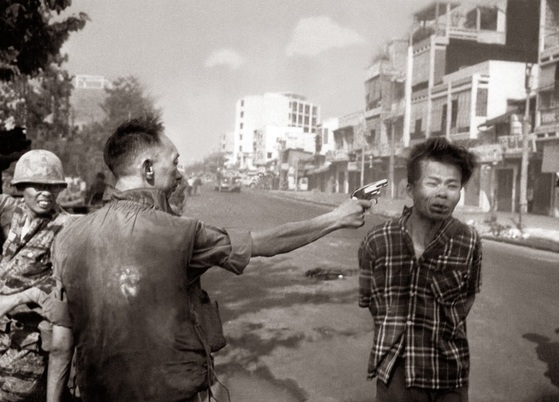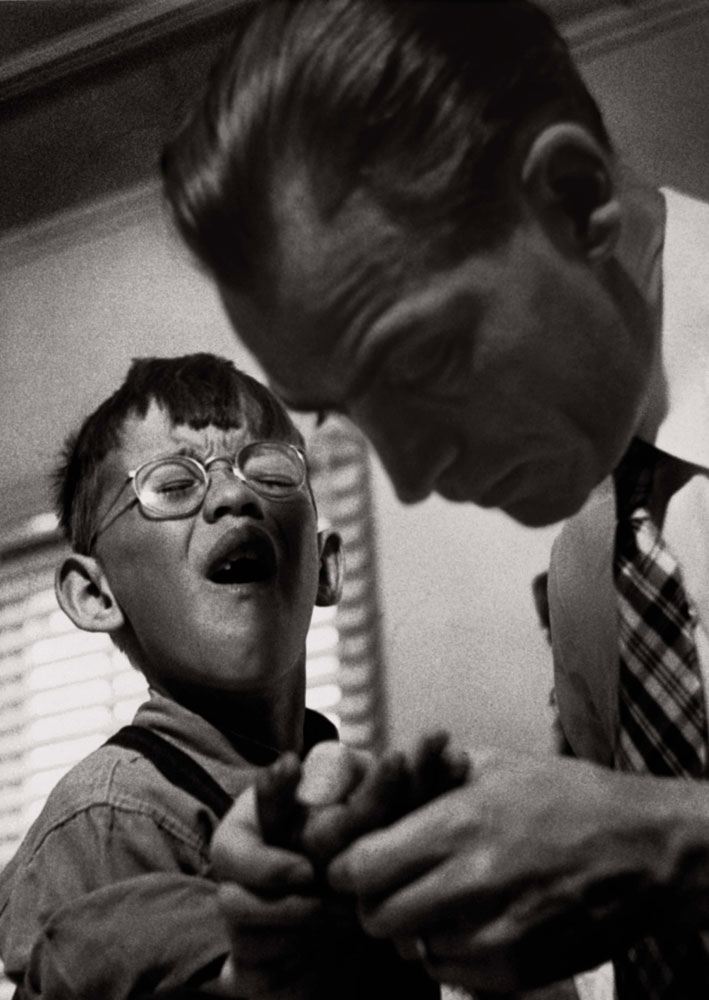The meanings of photographs rely on and are influenced by context. The meanings are not contained solely within the photographs themselves and a combination of factors including the viewer’s world view, knowledge and understanding, and the context in which the image is seen.
context
noun
- the circumstances that form the setting for an event, statement, or idea, and in terms of which it can be fully understood.
- the parts of something written or spoken that immediately precede and follow a word or passage and clarify its meaning.
meaning
noun
- what is meant by a word, text, concept, or action
In his article ‘Photographs and Context’ Terry Barret explores the impact context has on how we read, see or interpret a photograph.
He discusses the example Robert Doseneau’s photograph of a man and women in a Paris bar to demonstrate how a photograph is highly dependent on the context in which it appears. The same photograph appeared in 3 publications- as part of a photo essay on Paris cafes in a popular magazine, Le Point, in a brochure by a temperance league, and (without Doisneau’s consent), a French scandal paper with the caption “Prostitution in the ChampsElysees.” All three presentations fitted a context and were convincing and demonstrated what Roland Barthes called the channel of transmission- the context formed by the publication that surrounds it:
‘As for the channel of transmission, this is the newspaper itself, or more precisely, a complex of concurrent messages with the photograph as center and surrounds constituted by the text, the caption, the layout and, in a more abstract but no less informative way, by the very name of the paper (this name represents a knowledge that can heavily orientate the reading of the message strictly speaking: a photograph can change its meaning as it passes from the very conservative L’Aurore to the communist L ‘Humanite).’
Barret goes on to describe three sources to be considered or at play before drawing conclusions when looking at photographs, as he explains, ”In formulating interpretations or in adjudicating among implicit or explicit interpretations, three sources of information are available for examination: information evident within the picture, information surrounding the picture in its presentation, and information about the picture’s making. Each of these intersects with the others and influences our experience of pictures; each of these contains potential evidence for positing meaning; each of these should be examined before final conclusions are drawn.”
These sources include:
• Internal context-the photographs itself, date and creater
• External context-presentational environment
• Original context- that which was physically and psychologically present

This a photograph was taken by Eddie Adams during the Vietnam war. It quickly got world press coverage and became a symbol of the brutality and atrocities carried out during the war. The general holding the gun, who fired the gun, was cast as the villain. But Eddie Adams say it differently,
“Two people died in that photograph: the recipient of the bullet and General Nguyen Ngoc Loan. The general killed the Viet Cong; I killed the general with my camera. Still photographs are the most powerful weapons in the world. People believe them; but photographs do lie, even without manipulation. They are only half-truths. … What the photograph didn’t say was, ‘What would you do if you were the general at that time and place on that hot day, and you caught the so-called bad guy after he blew away one, two or three American people?’
As I researched this photograph (in the context of internal, external and original context) I learned a lot about its context forcing me to rethink my reading of it. I had seen it before and always assumed the general with the gun was the ‘bad guy’. The man being shot (Nguyen Van Lem) was a high ranking official -the captain of a Vietcong “revenge squad” responsible for executing dozens of unarmed civilians that day. So emotions are running high, it’s war, and one side kills another. A press photographer captures the decisive moment.
This photo had a huge impact, it was used in various publications (external context) to drive different agendas while today it can be seen in art galleries. Reading Eddie Adams account I can’t help revising how I feel about the general-what would I have done in that situation? Nguyen Van Lem was not an innocent party but did he deserve to be shot, hands tied, defenceless?
My reading, and focus, of the photograph, has shifted from assuming General Nguyen Ngoc Loan was the bad guy to one of there are no winners in war.


